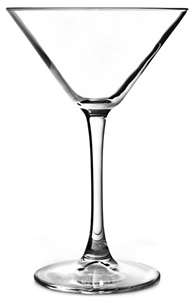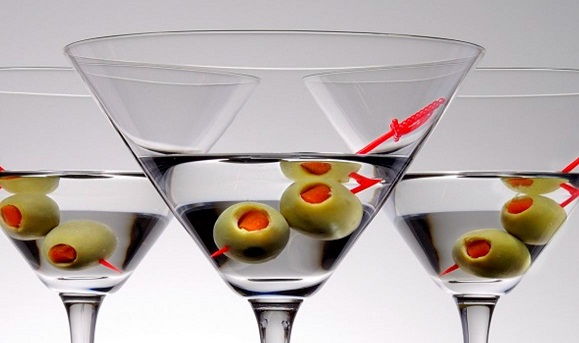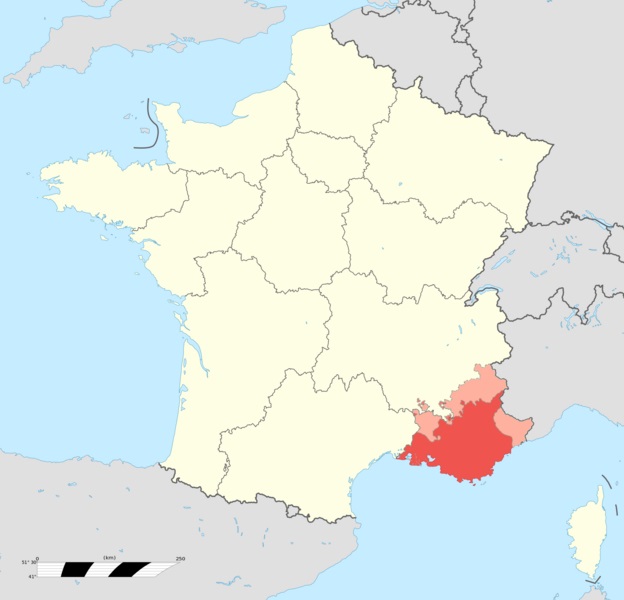Noilly Prat Flavors
Lemon Zest |
Orange Zest |
Herbs |
Bitter Herbs |
Rosemary |
White Flowers |
Cinnamon |
Anise |
Wormwood, Coriander, Rosemary, Citrus Peel, Sage, Chamomile and other medicinal herbs are typical flavors.
Noilly Prat Profile
Nolly Prat is soft and balanced with a bitter finish.
| SUGAR: | 35g/l |
| BODY: | Medium |
| ACIDITY: | Medium |
| ALCOHOL | 18% |
| Serving temperature: 4°C (40°F) As cold as possible Use a frosen glass | |
The Perfect Glass for Noilly Prat
A Coctail Glass with a wide bowl allows for maximum exposure to air, enhancing the aromatic qualities of the drink.

|
The long stem prevents the drinker’s hand from warming the chilled contents. The dramatic design of the glass visually complements Noilly Prat's reputation as an elegant, sophisticated cocktail. |
Noilly Prat Food Pairing
Noilly Prat is extremely versatile. It is best served chilled, and can be enjoyed both as an Apéritif or as an ingredient in a Cocktail.
The intense taste of Noilly Prat makes it a classic Apéritif before food.
Before food, there are a lot of snacks and bites that can accompany a Noilly Prat:
Aperitif |
Salad |
Tapas |
Olives |
Pommes |
Chips |
Popcorn |
Nuts |
Oysters |
Mussels |
Shrimps |
Lobster |
Cheese |
Sandwich |
Biscuits |
Chocolate |
Excellent Pairings
Green Olives. Asparagus Skewers.
Crudité. Celery with Creamy Cheese.
Seaweed Salad. Cucumber and Tomato Salad.
Potato Chips. Pommes Frittes. Onion Rings.
Peanuts. Popcorn. Salt Sticks.
Steak Tartare. Mushrooms.
Egg. Deviled Eggs. Omelette.
Fish Roe. Oysters. Scallops.
Lobster. Prawns. Crab Cakes.
Shrimps. Shrimp Cocktail.
Biscuits. Crackers. Baked Tofu. Halva Cakes.
Fruit. Yellow Apple. Mango. Grapes.
Lokum (Turkish Delight). Dark Chocolate.
Cheeses
Parmesan. Manchego.
Mature Cheddar. Premium Gouda.
Italian Specialities
Olive Ascolane (Stuffed Olives).
Tuna Tonnato. Crostini. Bruschetta.
About Vermouth
This fortified wine originated in Italy in the 16th century for medical purposes.
The word Vermouth comes from the German word for wormwood, a plant used for medical purposes for thousands of years.
Wormwood is also an ingredient in the liquor Absinthe.
For almost a century, was the use of wormwood banned in Europe and USA because wrongly thought to be an addictive psychoactive drug and hallucinogen.
Recently it was discovered that this was a misconception and that the health issues were due to fortified wine overconsumption.
Vermouth is flavored with 50 different ingredients such wormwood, quinine, citrus peels, roots, flowers and local herbs.
Provence and Languedoc in Southern France are known for the production of a Dry and White style.
Turin in the Piedmont region of Italy is known for the production of a Sweet and Red style.
Small wineries in the West Coast of USA began around 1998 to produce American Vermouth and they tend to avoid wormwood by choice.
Vermouth Production
Ingredients:
- Ordinary quality young wine.
- Mix of unfermented grape juice and brandy (mistelle).
- Flavoring Agents: medicinal herbs macerated or infused in alcohol.
Vermouth is usually produced with low-alcohol white wines from grapes Trebbiano, Catarratto, Piquepoul, Clairette Blanche and Bianchetta Trevigiana.
Vermouth production has 2 ways: Maceration or Infusion.
Maceration: the fortified wine and the botanical ingredients are kept in a barrel for 45 days and stirred regularly to stimulate the extraction of flavors.
Infusion: the botanical flavors are extracted directly into the spirit through distillation. After that, the aromatized spirit is added to the wine base.
Before bottling the fortidfied wine is filtered and pasteurized.
Vermouth is to be drunk young as it does not mature in bottle.
Vermouth in Cocktails
- Rosso Sweet and Spicy. Drink: Manhattan.
- Dry Tart and Herbaceous. Drink: Dry Martini.
- Bianco Citrus and Floral. Drink: Negroni Bianco.
When a secret is better than a patent!
The recipes of Vermouth are kept secret just like the recipe of Coca Cola.
Some formulas are known to but one person who will pass it to the heirs after death.
French Vermouth
Joseph Noilly created France's first vermouth in 1813 (50 years before the famous Italian Martini).
In 1855, his son Louis Noilly set up the company Noilly Prat in Marseille.
From 1865 to 1902, the company was managed by Anne Rosine Noilly-Prat.
The brand was acquired by its Italian competitor Martini & Rossi in 1971, which was merged into the Bacardi-Martini family of brands in 1992.

